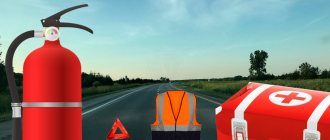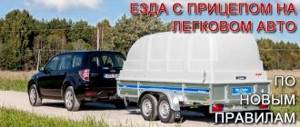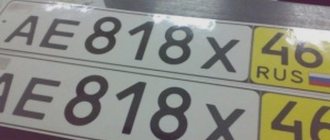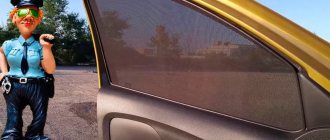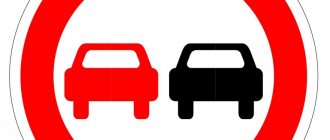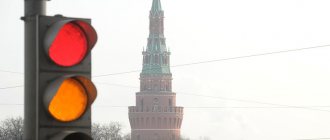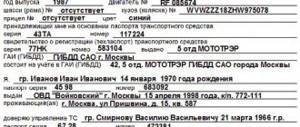Types and shelf life of each
The period of continuous operation of the fire extinguisher is determined by the manufacturer. It is written in the product data sheet. Depending on the cylinder model, the shelf life ranges from 1 to 5 years.
Best before date.
Common devices include the following types:
- Carbon dioxide.
- Freon.
- Chemical.
- Air-foam.
- Emulsion.
- Powder.
According to the principle of influence
The task of the product is to localize the fire as quickly as possible. Existing types differ in the substance contained in the cylinder. It has different physical and chemical characteristics and conditions of use.
Carbon dioxide
The device (OU) is used to extinguish materials that cannot burn without access to oxygen. The cylinder is a red conical cylinder with an installed locking and trigger mechanism and a plastic bell.
The substance pumped inside is carbon dioxide. When ejected, thick white foam is formed with a jet temperature of minus 70 degrees Celsius. If it gets on the hand or other area of the skin, it causes frostbite. Therefore, application requires caution.
Freon
Used in places where it is necessary to store valuables or property. Used in shops, documentary archives, museums.
The advantages of the product include versatility, tracelessness, and efficiency. There is one minus - the harmful influence of freon.
The validity period of a fire extinguisher in a car based on the substance is 5 years. After technical inspection, it can be reused.
Foam/chemical
They represent a reservoir with reagents pumped inside, located in containers isolated from each other. After activating the flask valve and tilting the fire extinguisher, they mix and react to form an extinguishing mixture.
The advantages of the device include:
- release of carbon dioxide, which increases the efficiency of eliminating the source of fire;
- ease of refilling;
- feeding time, jet length;
- long shelf life.
There are many more disadvantages.
These include:
- aggressive substance;
- corrosion of processed objects;
- temperature regime;
- storage under certain conditions.
These characteristics contribute to rare use and are the determining factor in regulating the price.
Air foam
Used to extinguish fires of organic materials and substances that change structure when heated (petroleum products, paints). The solution in the cylinder creates a foam cover that prevents oxygen from reaching the source of fire.
The advantage of the device is its operating time, which significantly exceeds that of other types of auto fire extinguishers.
Air emulsion
OVE cylinders are environmentally friendly and safe. They are used to eliminate the fire of liquid and solid materials, as well as equipment with a voltage of no more than 1000 V. They have a minimum consumption of substances and do not create dust.
The shelf life of a car fire extinguisher is 5 years.
Powder
Used to eliminate fires of hot materials, liquids and petroleum products. Also used to localize fires in cars or trucks.
Powder fire extinguishers.
The advantages of a powder device (PD) are:
- no temperature restrictions;
- high efficiency.
There are practically no disadvantages. The main disadvantage is pollution. Small particles of the injected material scatter to the sides and settle on the surface.
The shelf life of a powder fire extinguisher for a car is 5 years. After expiration, the device is sent for technical inspection.
Water
Devices based on this material effectively eliminate the combustion of solid and organic substances. They are ideal for localizing smoldering objects such as paper, rags, wood. Not for use in case of fire of liquids. Completely safe. The main disadvantage is the inability to use at low air temperatures.
By charge mass
Models are classified as follows:
- Up to 20 kilograms. These include small portable models used in offices and premises.
- From 20 to 450 kilograms. Mobile options used at metro stations or gas stations.
- Above 450 kilograms. Stationary models included in the automatic fire extinguishing system.
By body volume
The cylinder capacity of modern devices can be:
- Up to 5 liters – low-sized manual models.
- 5 - 10 liters - industrial use.
- 10 liters and more - large mobile or stationary models.
The effect of the pumped fire extinguishing agent does not depend on the capacity of the cylinder. The difference between the options lies in the internal pressure, which is checked using the installed pressure gauge.
Frequency of scheduled checks and recharging process
The main reason for the inoperability of fire extinguishers is failure to comply with the frequency of scheduled inspections and timely recharge of the cylinder.
Verification deadlines
The installation sites of fire extinguishers and approaches to them are checked quarterly, and an external inspection is carried out for the presence of mechanical damage.
Every year, all (some selectively) fire extinguishers with any charge are tested for compliance with the requirements and for leakage of the propellant from the cylinder.
Recharging process
Fire safety rules establish the following recharging periods:
- at least once a year water, air-foam, emulsion;
- powder, carbon dioxide, refrigerant devices - once every 5 years;
- after the fire extinguisher has been used and it is empty;
- if there is a leak of a displacing substance or gas , which can be seen when weighing by weight loss.
After recharging, a mark is placed on the cylinder in the form of a label, a tag attached to the body, and in the passport.
Self-recharging of fire extinguishers is not permitted. In order to recharge the fire extinguisher, you can contact the appropriate department of the Ministry of Emergency Situations.
There are also other licensed organizations engaged in such technical maintenance, including testing the body of fire extinguishing devices. A list of companies and their contact information will be provided at the fire department.
Which fire extinguisher to choose for a car
When considering a vehicle device model, you need to build on the existing requirements:
- The mass of the substance in the housing is at least 2 kg.
- In accordance with existing standards of 2018-2019, devices used in machines can only be carbon dioxide or powder. Other options are excluded.
- When buying a cylinder or first aid kit, ask for a certificate and passport. They will be required during verification by the relevant service.
- Consider the thickness of the housing walls. A good option is a steel model. Other products are less reliable.
Regarding the question of how to determine the expiration date of a car fire extinguisher, everything is simple here. It is usually applied on the label in a specially designated place.
Shelf life requirements for powder fire extinguishers
The ideal option among all car fire extinguishers is a powder one. Models OP-2 are compact and easy to use. They contain 2 kg of active substance.
Advantages of these models:
- average pressure of the working jet;
- convenient small size;
- low price.
A metal case is safer than a plastic one. The disadvantage is that the powder pollutes surrounding objects and territory.
The shelf life of this car fire extinguisher is 10 years per cylinder and 2 years per charge.
Regulatory requirements for maintenance
Any fire extinguishing products and first aid kit must comply with a number of emergency situations factors.
The current ones are:
- Compliance with GOST NPB 155-2002, as well as R51057-2001.
- The amount of pumped substance for trucks is 5 liters, for passenger vehicles - at least 2 liters.
- The period of possible use of a fire extinguisher is also important. The closer to its end, the less internal pressure. This needs to be monitored. When the pressure gauge drops below the permissible limits, the cylinder is sent for recharging.
- Labeling must include information about the manufacturer.
Recharging the fire extinguisher
Required each time the product is used and in accordance with the inspection schedule. Over time, the substance in the device becomes obsolete. It needs to be replaced. However, do not open such devices and do not restore the contents yourself; call a professional. He usually takes all the device units with him to test them and charge them in the workshop. There are stocks of fire-fighting materials and special equipment for pumping them.
Upon completion of the work, the repairman returned the repaired equipment to the owner with a report indicating the work he performed. Based on the data contained in the act, the procedure for charging fire extinguishers is recorded in a regulatory document - a logbook.
Car storage rules
Rules for storing in a car.
The placement of the fire extinguisher must comply with a number of standards:
- Placing the device in the trunk of a car is prohibited. If there is a sudden fire, you may not have time to remove it.
- The storage area for the cylinder is protected from direct sunlight.
- The fastening must be reliable. Contact of the housing with other elements is unacceptable.
Car fire extinguishers
Restoration, production and repair of car keys
The first criterion when choosing should be the volume of this device. Thus, owners of cars and small trucks weighing up to 3.5 tons must equip their vehicles with at least one fire extinguisher, the charge of which is equal to or greater than two kilograms (2 liters). At the same time, buses and standard trucks weighing from 3.5 to 7.5 tons must be equipped with two similar devices. Smaller volumes will not allow you to effectively fight the flame in the event of a vehicle fire.
Attention! Today, mini fire extinguishers for passenger cars have appeared on the automotive market, with a volume of only 0.5 kg (see figure on the right). Remember, the presence of such a primary fire extinguishing agent will not save you either from the fire or from the traffic police officers! The next important factor is the type of fire extinguisher.
This year, such devices must comply with the requirements of GOST R51057-2001 and NPB 155-2002. In the vast majority of cases, it will be enough for motorists to purchase a powder or carbon dioxide fire extinguisher of the required volume. At the same time, it must contain a marked list with technical characteristics, methods of application, expiration date, storage conditions, as well as information about the manufacturer
The next important factor is the type of fire extinguisher. This year, such devices must comply with the requirements of GOST R51057-2001 and NPB 155-2002. In the vast majority of cases, it will be enough for motorists to purchase a powder or carbon dioxide fire extinguisher of the required volume. At the same time, it should contain a marked list with technical characteristics, methods of application, expiration date, storage conditions, as well as information about the manufacturer.
It should be noted that carbon dioxide models are suitable for use for 5 years, while powder models operate for no more than 18 months. In addition, the unique feature of the former is the ability to extinguish a fire in a hard-to-reach place, and the latter - versatility and resistance to re-ignition due to the composition of the working mixture.
Often, due to their compact size, domestic motorists purchase aerosol fire extinguishers. In this case, you need to understand that such models are ineffective when a vehicle catches fire, because they contain very little active substance and are not able to extinguish a fast-moving flame.
Useful tips
In conclusion, let me make a few recommendations:
- Buy a fire extinguisher for your car only in specialized stores.
- Ask the seller for certificates and manufacturer documents.
- Preliminarily determine the standard volumes of the fire extinguisher for your car.
- Make sure that the selected model meets GOST R51057-2001 and NPB 155-2002.
- Check the seal for damage and expiration date.
If you complete each step in good faith, then in the end you will equip your car with a fire extinguisher that can help out in a critical situation, of course, if you know how to use it.
Do not forget that the fire extinguisher in the car must be in an easily accessible place, in a fixed state - read the article “Brackets for fire extinguishers“.
Precautionary measures
In accordance with the 2021 regulations, the car must have at least one fire extinguisher, first aid kit, and car kit.
Their storage involves a number of rules, including:
- If a defect or malfunction of any mechanism is detected, the cylinder must be sent for an unscheduled inspection.
- The fastening is reliable. Any shock, impact or other damage may damage the device or cause it to operate unintentionally.
- Placement in direct sunlight or near heating elements is prohibited. Increasing the temperature of the injected material above + 50 degrees Celsius can spoil it.
Is a fire extinguisher required in a car by law?
A fire extinguisher is required for maintenance. The parameters, types and characteristics of the device are recorded in GOST, NPB.
| What's in store | Legislative acts |
| Requirements for fire extinguishers |
|
| Duty to have |
|
Manual and automatic devices of greater weight are allowed, but not less than the recommended characteristics. The device must be intended by the manufacturer for use in motorized vehicles (ATVs).
| Cars | Volume not less than (l) | Cargo weight (excluding cylinders) not less (kg) |
| Cars | 2 | 2 |
| Cargo The amount of fire extinguishing equipment for registration and maintenance of vehicles is regulated by SP 9.13130.2009 (Appendix B, paragraphs B1 - B2) and “Fire Safety Rules” (paragraph 212). This parameter depends on the weight, purpose, and carrying capacity of the vehicle. |
|
Shelf life of a car fire extinguisher
When replacing weights, all containers must be checked every 5 years, even if all values are within normal limits. The manufacturer may specify increased maintenance frequency.
| Cm. | Validity of the technical exam (in years) | Possibility of charging and recharging (at least) |
| carbon dioxide | Up to 15 - 20 |
|
| Powder | To 10 |
The charge should be renewed more often if recommended by the manufacturer. For example, some models of powder car fire extinguishers should be refilled every 4 or 1.5 years, and carbon dioxide fire extinguishers - every 2 years.
The check includes checking the fire extinguishing device, filters, all components, checking the weight of the cargo by weighing.
After use or if the charge weight deviates from 5%, a full charge will be required. Capacities may be recognized in advance as unsuitable for operation. Do not restore - replace with a new one.
The date of manufacture is indicated on the case by the manufacturer (there is a torn piece of paper in front of the number):
- Arabic numerals - year of manufacture;
- Roman - a month.
Expiration and inspection dates are recorded by the manufacturer and the relevant authorities in technical data sheets and stickers on the case.
The cost of refilling the OP is almost the same as the price of a new product - it is usually better to buy a new one if it has expired.
Shelf life of powder fire extinguisher
The OP-2 powder block is the most convenient and inexpensive option for compliance. Its filler is a powder mixture that copes well with fire on any hot ground. The problem, however, is the difficulty of cleaning the machine from residues after such processing.
The shelf life of a car powder fire extinguisher is limited to 10 years. It is recommended to store it in a convenient place. It is necessary to limit the possibility of mechanical impact. It is also important to consider that the filling must be preserved.
Shelf life of carbon dioxide fire extinguishers
The carbon dioxide car OU-2 has better properties than the powder car. It fights fire by reducing oxygen levels, which actively prevents combustion.
This technique is effective, but cannot be used in all areas. If there are smoldering fires, the fire may start again.
At the same time, the use of such a product does not leave marks on the car.
The shelf life of carbon dioxide fire extinguishers is 15-20 years. The storage requirements are the same as for a powder fire extinguisher.
How to pass inspection the first time? Cheat sheet for car owners
Photo by Alexander CHUGUEV from the VB archive. For untimely technical inspection, the current legislation provides for administrative liability with a fine of 1 to 3 basic units (today it is from 25.5 to 76.5 rubles).
To pass the inspection as quickly as possible, check the availability and validity of the documents:
- driver's license
- driver's license ticket
- vehicle registration certificate (registration certificate)
- certificate of inspection
- medical certificate
- insurance policy (compulsory vehicle insurance)
- payment receipt for obtaining a permit to participate in road traffic (to be paid on the spot)
- check for payment for the technical inspection (payable on the spot)
- receipt of payment of the state duty for the admission of the vehicle to participate in road traffic
STATE DUTIES
The state duty is paid at any bank or Belposhta branch. When paying by legal entities, the payment order must have the original seal of the bank.
Payment of the state duty is made to the bank account of the tax office at the place of registration of the owner of the vehicle. The details of tax inspectorates can be found by following the link https://www.minfin.gov.by (in practice, all employees of institutions that accept this payment are aware of the details and payment amounts).
Payment of the state fee is made for the entire period of validity of the permit to admit the vehicle to participate in road traffic:
- 1 year - for cars, special cars, trailers, the permissible maximum weight of which does not exceed 0.75 tons, 10 or more years have passed since the year of manufacture (including the year of manufacture).
- 2 years - for passenger cars, trailers, the permissible maximum weight of which does not exceed 0.75 tons, less than 10 years have passed since the year of manufacture (including the year of manufacture), as well as for ATVs, motorcycles and mopeds.
For taxi cars, the period for issuing a permit is 6 months, the state duty is paid for 1 year.
State duty rates for passenger cars of individuals:
(for 1 year, in base values, in brackets - in rubles as of March 25, 2019)
- Motorcycle, trailer with a permissible maximum weight of up to 0.75 tons - 2 (51 rub.)
- Passenger car with a permissible maximum weight of not more than 1.5 tons - 3 (RUB 76.5)
- A passenger car with a permissible maximum weight of more than 1.5 tons, but not more than 2 tons - 6 (153 rubles)
- A passenger car with a permissible maximum weight of more than 2 tons, but not more than 3 tons - 8 (204 rubles)
- Passenger car with a permissible maximum weight of more than 3 tons - 11 (275 rub.)
Benefits when paying state fees
A benefit is provided in the form of 50 percent of the state duty rate for vehicles owned by veterans of the Great Patriotic War, disabled people of the 1st and 2nd groups - in the presence of documents confirming the benefit, as well as a valid medical certificate of health confirming fitness for driving motor vehicles.
Pre-registration for technical inspection
At all diagnostic stations that operate by appointment, cars that are registered for a specific time are the first to enter the line.
You can sign up for a technical inspection through the online registration system Zapros.by
Cars without an appointment are accepted on a first-come, first-served basis.
During busy periods (beginning, end of the month, end of the year, increases in rates, tariffs), passing a technical inspection on a first-come, first-served basis at some stations can take up to two hours.
Photo: pixabay.com
How to prepare a car for inspection
Immediately before the inspection, check:
- Cleanliness outside and inside (the car is accepted only in its clean form).
- The performance of all lighting devices.
- On a road slope – the parking brake is operational.
- Windshield washer and wiper.
- Tire condition (extreme wear of tires is not allowed; one axle must have tires of the same type with the same tread pattern).
- Sound signal.
- Seat belts.
- Door locks (doors must open from the outside and from the inside).
- Availability of a first aid kit, fire extinguisher, warning triangle (also pay attention to the expiration dates of the drugs in the first aid kit and the expiration date of the fire extinguisher).
Photo: pixabay.com
Regarding the first aid kit and fire extinguisher
The list of investments in a car first aid kit is determined by the Ministry of Health of the Republic of Belarus.
LIST of attachments included in a first aid kit for equipping vehicles (car):
| No. | Name | Unit | Quantity |
| 1 | Ammonium solution 10% – 1 ml No. 10 | package | 1 |
| 2 | Iodine alcohol solution 5% – 10 ml or | bottle | 1 |
| 5% – 1 ml No. 10 | package | 1 | |
| 3 | Non-sterile bandages: | ||
| 5 m x 5 cm | package | 2 | |
| 5 m x 10 cm | » | 2 | |
| 4 | Sterile bandages 5 m x 10 cm | » | 1 |
| 5 | Medical elastic non-sterile tubular bandage No. 1, 3, 6 | » | 1 |
| 6 | Absorbent cotton wool 50.0 | » | 1 |
| 7 | Esmarch's hemostatic tourniquet | » | 1 |
| 8 | Bactericidal adhesive plaster: | ||
| 2.5 x 7.2 cm | » | 3 | |
| 4 x 10 cm (6 x 10 cm) | » | 1 | |
| 9 | Roll adhesive plaster 1 x 500 cm (2 x 500 cm) | » | 1 |
| 10 | Blunt scissors with a length of at least 13 cm | » | 1 |
| 11 | Hypothermic cooling package | » | 1 |
| 12 | Deleted | ||
| 13 | Sterile napkin measuring at least 10 x 10 cm No. 1 | package | 4 |
Source: website of the Ministry of Health of the Republic of Belarus
A powder fire extinguisher (designation OP) must be checked and recharged no later than two years from the production date indicated on the fire extinguisher or the date of the previous recharge, a carbon dioxide fire extinguisher (designation OU) - once every five years.
If a pressure gauge is installed on the fire extinguisher, then its readings must be in the green or yellow zones of the scale, otherwise the fire extinguisher is considered faulty.
In terms of performance and reliability, it is recommended to use carbon dioxide fire extinguishers.
On the day of the technical inspection
You must arrive at the diagnostic station 10-15 minutes before the appointed time.
During this time it is necessary:
- pay for technical inspection and permit issuance services
- remove the wheel caps (provide visual access to the wheel mounts)
- in winter, clear the car of snow
- Place a first aid kit, fire extinguisher and warning triangle on the back seat of the car.
If the vehicle is in good condition
After passing the diagnostic line, obtain a diagnostic card and, with all the above documents, contact an engineer of the Beltechosmotr Unitary Enterprise to obtain permission to allow the vehicle to participate in road traffic.
If the vehicle is not working properly
Within 20 calendar days, eliminate the faults indicated in the diagnostic card and provide the vehicle for re-checking only these faults.
If a “faulty” diagnostic card is issued, the technical inspection is considered failed, and driving the vehicle is a violation of the rules for operating vehicles (even within 20 calendar days before the faults are eliminated), which entails a fine.
The technical inspection is considered passed only after receiving permission to participate in road traffic.
Photo from the VB archive.
What kind of fire extinguisher is needed in a truck?
According to fire regulations, trucks weighing more than 3.5 tons must have a fire extinguisher with a volume of at least five liters. The requirements for the type of extinguishing agent are absolutely similar. The equipment must be located in the cabin.
Purely everyday experience suggests that it is better to have two fire extinguishers in trucks. This will increase your chances of keeping your property relatively safe.
But before purchasing a device, the question arises: what type of extinguishing mixture is more effective? Let's look at the technical specifications.
The principle of operation of a powder fire extinguisher (OP) is the formation of a dense foam mixture. Due to its dense molecular structure, the substance prevents the flow of oxygen. As a result, elimination of the fire and/or source of fire.
This type of equipment also differs in the way the pressure is created. To determine this, it is enough to find the following letters on the body:
- “B” - a cylinder with gas under pressure;
- “G” - equipped with a gas-generating cartridge;
- "Z" - downloadable.
It is worth noting that this type of equipment is effective against fire of any complexity. The cost varies from 350 rubles for a 2-liter device to 600 rubles for a 5-liter device. The service life of the OP is 10 years, subject to normal storage.
A carbon dioxide (CO) fire extinguisher puts out fires using a strong stream of carbon dioxide, or CO2. The powerful pressure simply knocks out the flame and lowers the temperature directly in the hearth. DUs are especially effective when it is necessary to extinguish fire in hard-to-reach places. The price for them starts from 500 rubles, for 3 kg and up to 2800 rubles, for equipment of 10 kg. The OU will serve you for about 15 years.
According to Russian legislation, violation of fire safety rules for vehicles entails penalties.
Violations include:
- lack of fire extinguisher;
- presence of expired equipment;
- faulty device.
The rules state that if a fire extinguisher malfunctions, the driver is obliged to purchase the device at the nearest specialized store. The fixed amount of the fine is 500 rubles, but the traffic police officer has the right to issue a warning. However, as practice shows, most often motorists are “fined on the spot.” Only in rare cases is a receipt issued and a protocol drawn up.
Unfortunately, most people do not acquire a fire extinguisher for safety reasons. And to protect yourself from unnecessary expenses in the form of fines. But first of all, having a fire extinguisher is a matter of health, and sometimes life. If you think that nothing like this will ever happen to you and fire-fighting equipment is necessary so that the traffic police officer does not get caught. Better reconsider your views.
How to determine the expiration date?
The label on the cylinder is the only source of information for checking the expiration date of a fire extinguisher.
The requirements for the label of all types of fire extinguishers are strictly regulated . For example, its height should be at least half the cylinder. Also, the label must contain information about the expiration date of the cylinder.
The validity period of a car fire extinguisher can be either real or nominal . For example, the nominal shelf life is the time during which, if all necessary conditions are met, the device should be in working condition.
However, how long a fire extinguisher will last directly depends on the timely maintenance of the device and on the conditions of its storage - this is the real shelf life.
In order for the nominal shelf life to coincide with the actual one, the driver will need to annually carry out a technical inspection of the device by specialists.
How to carry out verification yourself? It is important for a prudent car owner to determine the actual condition of his fire extinguisher.
During verification, he must weigh it, measure the pressure, examine the presence (absence) of corrosion and (or) mechanical damage, and if there is a technical need, it is necessary to recharge.
Of course, in order for the driver to be completely confident in the suitability of his fire extinguisher, he must contact the nearest VDPO (All-Russian Voluntary Firefighting Society).


